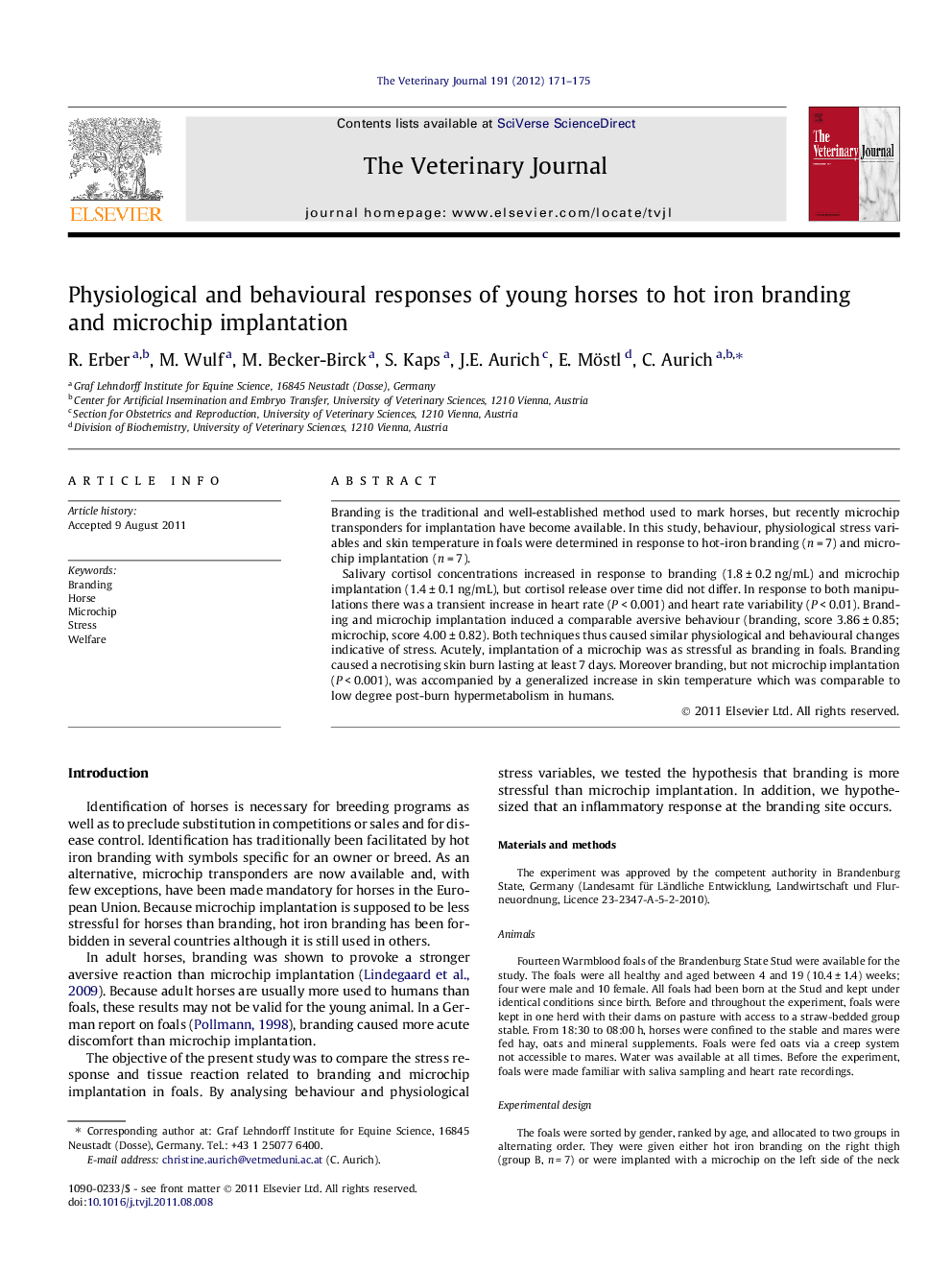| Article ID | Journal | Published Year | Pages | File Type |
|---|---|---|---|---|
| 2464437 | The Veterinary Journal | 2012 | 5 Pages |
Branding is the traditional and well-established method used to mark horses, but recently microchip transponders for implantation have become available. In this study, behaviour, physiological stress variables and skin temperature in foals were determined in response to hot-iron branding (n = 7) and microchip implantation (n = 7).Salivary cortisol concentrations increased in response to branding (1.8 ± 0.2 ng/mL) and microchip implantation (1.4 ± 0.1 ng/mL), but cortisol release over time did not differ. In response to both manipulations there was a transient increase in heart rate (P < 0.001) and heart rate variability (P < 0.01). Branding and microchip implantation induced a comparable aversive behaviour (branding, score 3.86 ± 0.85; microchip, score 4.00 ± 0.82). Both techniques thus caused similar physiological and behavioural changes indicative of stress. Acutely, implantation of a microchip was as stressful as branding in foals. Branding caused a necrotising skin burn lasting at least 7 days. Moreover branding, but not microchip implantation (P < 0.001), was accompanied by a generalized increase in skin temperature which was comparable to low degree post-burn hypermetabolism in humans.
